Natural variations in frog vocal activity persists despite years in environmentally-controlled conditions; findings have implications for how this critically endangered species breeds and communicates
BALTIMORE, MD – What set out to be a baseline study of vocal calls in Panamanian golden frogs (PGF) at the Maryland Zoo has yielded findings that could have positive implications for this critically endangered species which has not been seen in the wild since 2009.
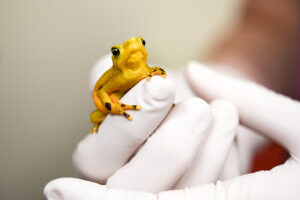
Because little is known about PGF vocal behavior in the wild, researchers used bioacoustic monitoring to create a baseline for acoustic characteristics of their call and vocal activity over time.
The recordings showed that, despite consistent temperature, lighting, humidity levels, and daily activity schedules, the frogs’ vocalizations followed daily and seasonal variations just as they would in the wild. This finding suggests that vocal behavior could help mediate a variety of social interactions among the frogs, despite previous assumptions that this species predominantly uses conspicuous visual hand waving gestures, called semaphoring, to better communicate in their noisy, native rainforest environments.
“The study gives us insight into how important these vocalizations could be,” said Alan Zigler, an animal keeper at Maryland Zoo and the study’s lead author. “Obviously it’s a very hardwired behavior, even in animals that have never lived in their native environment.”
“We know relatively little about this species because behaviors like vocalizations hadn’t been thoroughly described and we can’t go back and compare calls from our frogs to wild counterparts like you could with other species of frogs,” said Dr. Ellen Bronson, Sr. Director of Animal Health, Conservation & Research at the Maryland Zoo.
“Any behavior that uses so much of the frog’s energy is very likely to be important,” Zigler said. “If semaphoring was really the sole basis of communication, you wouldn’t expect to see the patterned, profound bouts of vocalizations that we observed in this study ”
The full study, Critical calls: Circadian and seasonal periodicity in vocal activity in a breeding colony of Panamanian golden frogs (Atelopus zeteki) is published by the PLOS (Public Library of Science) journal PLOS ONE.
In addition to Alan Zigler and Ellen Bronson from the Maryland Zoo, the study was a collaboration with Stephanie Straw and Tobias Riede of Midwestern University, Glendale Arizone, and Isao Tokuda of Ritsumeikan University, Kusatsu, Shiga, Japan.
“The study highlights how vocal signaling is patterned at different time scales – throughout a 24-hour period, for example – and over an entire season,” said co-author, Stephanie Straw, a veterinary student at Midwestern University.
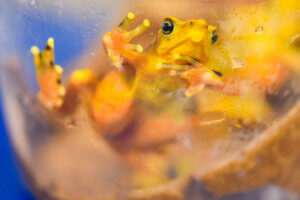
ABOUT PGF
Panamanian golden frogs (Atelopus zeteki) are native to the wet rainforests and dry cloud forests of the Cordilleran Mountains that run like a spine through western-central Panama in Central America. They are an important part of the Panamanian national identity, despite the fact that they haven’t been seen in the wild for decades.
The frogs are listed as critically endangered and have not been sighted in the wild since 2009. Habitat loss, poaching, and environmental contamination challenged populations of this species. A globally-dispersed fungal pathogen, Batrachochytrium dendrobatidis, also known as chytrid, led to the severe population declines of this very susceptible species.
Maryland Zoo regularly leads, or collaborates on, multiple research projects to further the understanding of this species and support its eventual reintroduction to the Panamanian cloud forests.
Maryland Zoo was the first institution to successfully breed Panamanian golden frogs and continues to lead in the successful breeding, medical care, and management of this species.
Through breeding recommendations from the Association of Zoos and Aquariums (AZA) Species Survival Plan (SSP), Maryland Zoo distributes tremendous numbers of offspring to other zoos, aquariums, and conservation partners for perpetuation of the species.

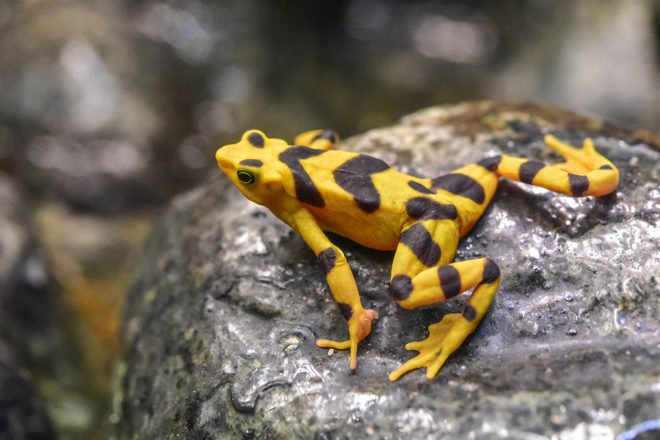
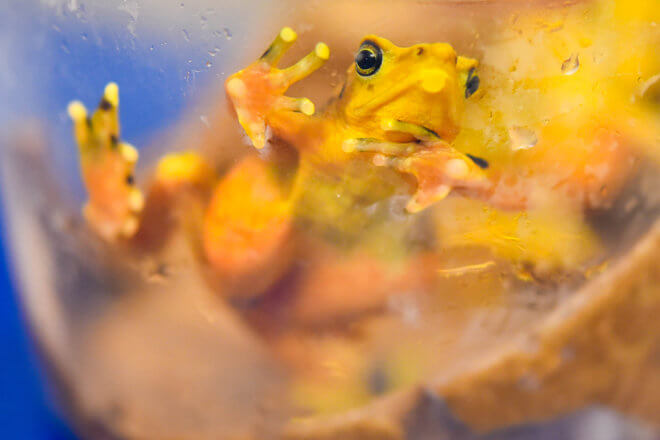
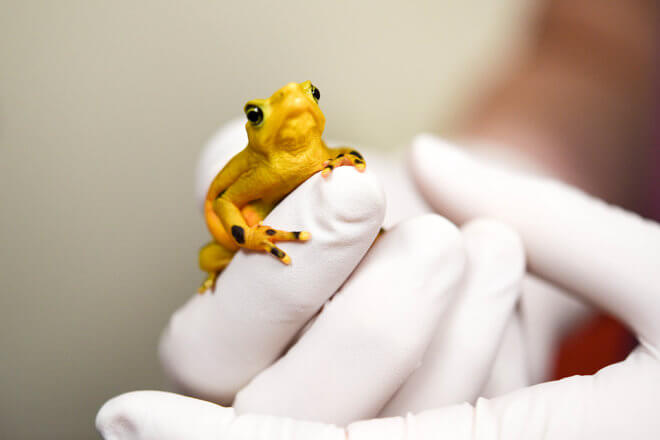
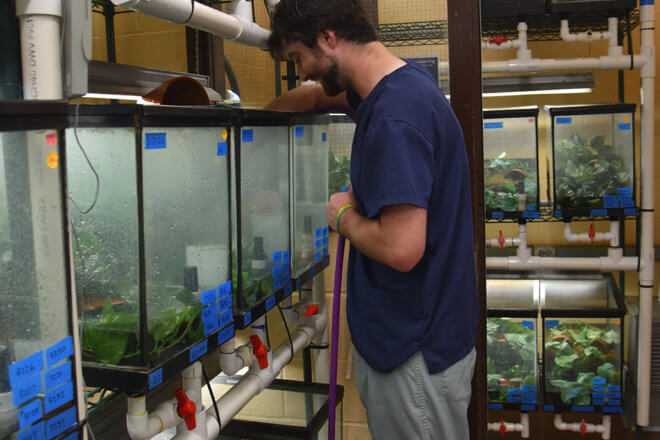




Share this article